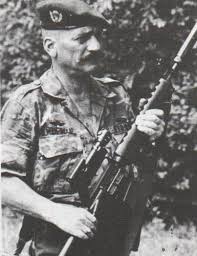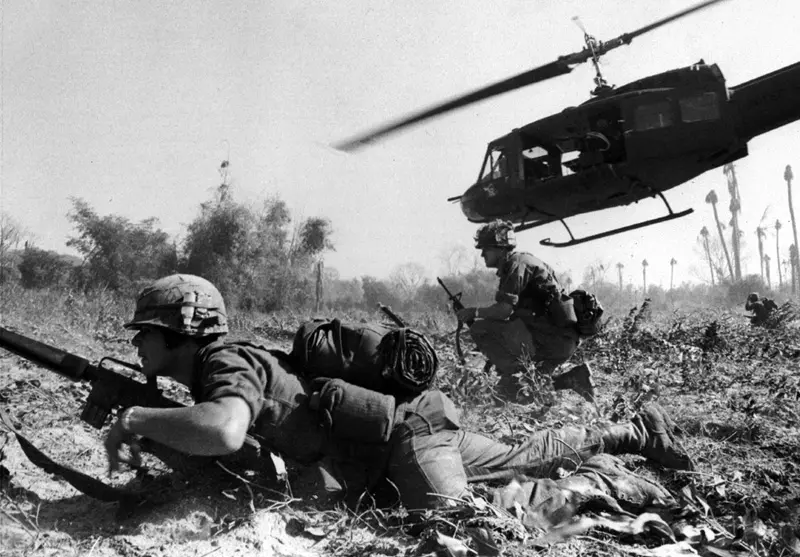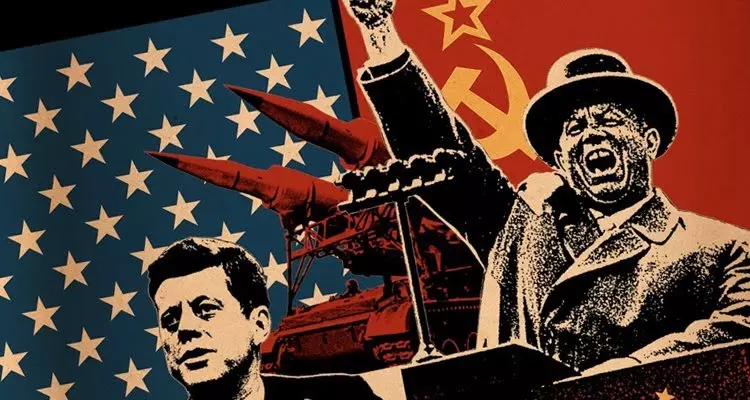Mitch WerBell the Third is a fascinating man and a controversial figure who claimed a small stake of fame during the Cold War. History characterizes him as a mercenary, spy, and fervent anti-communist. His early life allowed him to travel the world, and his Scottish mother and Russian father certainly offered him a unique perspective on the world.
His father was a Czarist cavalry officer who clashed with the Bolsheviks before fleeing to the United States. Mitchell Livingston WerBell III was born in 1918 in Philadelphia. He grew up traveling quite a bit. He graduated from the University of Pennsylvania with a degree in journalism and, in 1942, joined the Office of Strategic Services (OSS), the predecessor to the CIA.
The OSS operated around the globe in WWII, and WerBell found himself in Southeast Asia. There he served as a guerilla fighting against the Japanese while also dealing with shifting alliances and internal strife in China. His activities at the time seem to be lost to time. He claimed to have participated in prisoner recovery and oversaw the surrender of Japanese General Sumita after the atomic bomb was dropped.
Even though we have limited information about his time in the OSS, the water doesn’t get even close to muddied until a bit after WWII, when it becomes less and less clear who WerBell worked for and what his role was.
WerBell’s activities after World War II

We know that after he left the OSS, he worked in public relations with various firms and even formed his own PR firm. According to an interview in Saga magazine, he entered the reserves in military intelligence for a short bit.
WerBell never really explains he left PR and dipped his toes back into intelligence. Upon re-entering the intelligence world his new assignment was to support Fulgencio Batista in maintaining control over Cuba. In a 1970 interview with Atlanta magazine, he was quoted as saying, “our function was to keep Batista in power, although the U.S. was looking favorably on Fidel at that point.”
WerBell claims he’s never been employed by the CIA and never received any money from them. However, according to a 1978 book called Spooks: The Haunting of America Werbell worked under contract for the CIA in the 1960s to help organize amphibious landings against Cuba. Werbell denies the claim. He would only allude to working for a private group of financiers who had similar goals to his.
Related: How the Thompson SMG helped shape modern warfare
No CIA Man Here
An article printed in Atlanta magazine and later in the Washington Post claims that WerBell worked in the Dominican Republic in 1965. This paramilitary operation saw him working with the Dominican government to fight off insurgents. This article claims he was in the middle of the fighting and participated in the Ozama River battle.
In the Dominican Republic, a U.S. ambassador attempted to have Mitch deported because he did not support an end to hostilities. Yet, even he couldn’t toss WerBell out of the country.
Another story details Werbell working on dropping a spy off the coast of Cuba, but Cuban soldiers captured him and his team. Somehow they managed to escape, steal a boat and take 16 Cubans with them. However, the veracity of these stories is up for debate.
Related: The Bushmaster carbine – Made for the jungle
The Haitian coup

In 1966 WerBell got tangled up in Project Nassau where he acted as an advisor for an invasion of Haiti. The invasion would be launched by Haitian and Cuban exiles against Haitian President François Duvalier. These plots need support and lots of cash, and the men found financing through CBS in a move that sounds like something out of a cyberpunk dystopian fiction. In return, CBS obtained filming rights to the invasion.
If the invasion were successful, the island would be used as a staging port to invade Cuba. The plan fell apart when Customs raided the men’s hideout at Coco Plum Island. There they found 75 commandos and a variety of small arms. WerBell was arrested, as were the other masterminds of the invasion.
While most were convicted about his role, WerBell’s charges were dropped. During the investigation into CBS, many claimed that WerBell’s involvement implied tacit United States approval due to his “CIA” connections.
Related: Green Berets and Marines bring Halloween cheer (sort of) to Bolivia
Vietnam and Southeast Asia

Vietnam presented Mitch with a new battleground and coincided with his fledgling arms company, SIONICS which designed suppressors, including one for the M16 rifle. He partnered with Gordon Ingram, designer of the MAC-10 SMG, and markered the weapon to the U.S. military paired with a SIONICS suppressor.
WerBell was an accomplished suppressor designer with over 25 designs credited to his name. He created the WerBell Relief Valve to allow suppressors to work with machine guns and even pioneered the use of titanium in suppressor construction.
SIONICS marketed the suppressor to both American and Vietnamese forces. According to legend, the U.S. Army granted WerBell a temporary warrant as a major general so he could travel through Vietnam easily. Major General John Singlaub confirmed this. Singlaub himself was a former OSS man and founding member of the CIA.
Mitch showcased weapons and suppressors as well as night vision and surveillance equipment. He wheeled and dealed, but his success in selling MAC-10s was limited.
In an interview with Saga magazine, Mitch claimed that while he was din Vietnam, he dumped rats infected with the bubonic plague from a helicopter in North Vietnam. When asked who he did that for, he never said.
Related: These are 6 of the weirdest suppressed weapons of Vietnam
The Abaco Affair

In the 1970s, an interest by American developers in the Bahmanian island Abaco brought Mitch back front and center to a potential coup.
According to the San Francisco Chronicle, WerBell attempted a coup at the behest of a group of American millionaires with numerous CIA agents said to be among the group’s committee. This wasn’t a secret action, and in 1975 Esquire ran an article and piece on the attempt as it was in progress.
However, this wasn’t planned as a grenade and machine-gun coup but as an ideological one. WerBell and co. attempted to create a micronation by convincing the people of Abaco through propaganda to support the Abaco Independence Movement party and become independent. He laid all of this out in the Esquire article over drinks and cigars.
Yet, the Abaco Independence Movement fell apart, and interest waned in the idea of a developed tourist-friendly micronation.
Nevertheless, throughout the 70s and 80s, Mitch WerBell remained busy and sought permission from the CIA to conduct a coup against Omar Torrijos in Panama. The CIA denied and no such action occurred. He also claimed to work for Coca-Cola to prevent kidnappings in Argentina, but Coca-Cola denied this.
The world according to WerBell

In his later years, he became involved with pornographic publisher Larry Flynt. He acted as a bodyguard and was subsequently arrested for carrying a weapon into Federal District Court in California. There is also an accusation that Flynt hired WerBell to kill numerous people, including Hugh Hefner, for one million dollars.
This became public when Los Angeles Sheriff Sherman Block presented a photocopy of the check allegedly signed by Flynt. Flynt denied the accusation to the Associated Press.
A month after receiving the check, Mitch WerBell passed away, although, in true Mitch fashion, even his death is shrouded in mystery. An accusation that Flynt had him poisoned floated around but was seemingly a work of fiction.
Mitch Werbell is a fascinating character. The man involved himself in some very interesting activities but was also a bit loud and proud to be a secret agent. Mitch repeatedly claimed he never worked for the CIA. One reporter even remarked he would get angry at the accusation that he didn’t.
Maybe in the next 50 years, we’ll have more answers as information is declassified. However, for now, Mitch WerBell exists as a fascinating character and a true international man of mystery.
Read more from Sandboxx News
- Why Billy Waugh will always be cooler than you
- What if the Soviets had invaded Europe? ‘Combat Mission: Cold War’ aims to find out
- The siege of the Green Berets at Plei Me: The first major battle of the US in Vietnam
- Letters to Loretta: Surviving through the brutal German winter
- These are the 5 TV shows to watch right now




